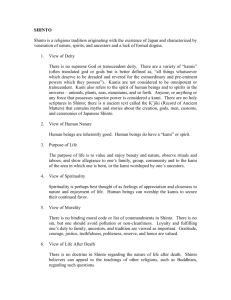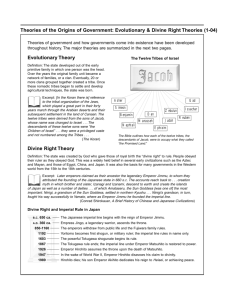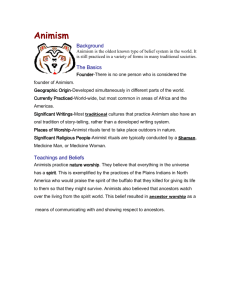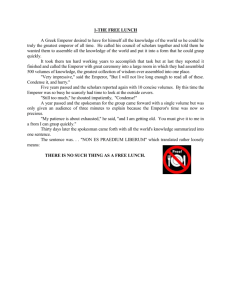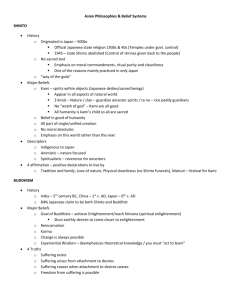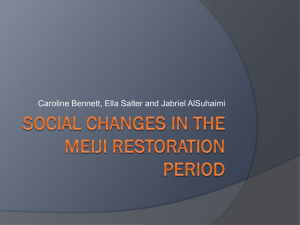Feudal Japan
advertisement
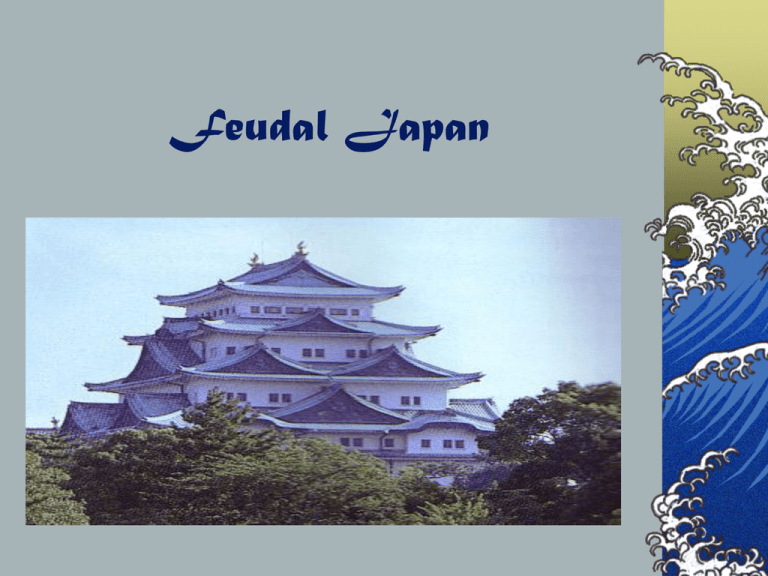
Feudal Japan The Creation A mythical story is told about the beginnings of Japan. Long ago the islands of Japan did not even exist, only ocean. A god and goddess looked down from the heavens above and saw a long, colorful rainbow streaking over the ocean. The Creation The rainbow formed a splendid bridge and the god and goddess decided to walk across it. Pausing in the center of this stretch of color, the god lowered his jeweled spear into the ocean. The Creation He swirled the spear around and around and lifted it from the water. Tiny water drops fell from the tip of the spear, and as they hit the ocean, they turned into land. The First Emperor The god and goddess descended to their newly created land where the goddess gave birth to Amaterasu, the goddess of the sun. Her great, great grandson is thought to be Jimmu, founder of Japan’s royal family. The First Emperor Every emperor of Japan, from Jimmu’s time to present day, have been directly related to Jimmu and therefore, a descendant of the gods. Three Treasures Jimmu carried with him the proof he needed to verify his divine ancestry. Three treasures, handed down by the gods, were always to be kept in possession of Japan’s emperors. With this evidence, no one could ever doubt that Japan’s emperors were truly related to the gods. Three Treasures The first treasure was a mirror that belonged to the sun goddess, representing the emperor’s relation with the gods. Three Treasures The next treasure was a special sword, representing the emperor’s strength. Three Treasures The third treasure was a jewel, said to actually have been taken from the steps of heaven, representing the great wisdom the emperor possesses. Battles with Ainu Jimmu gained control of Japan about 660 BC. He successfully battled against a different race of people who originally lived in Japan. Battles with Ainu These people looked different than present day Japanese people. They were tall, white skinned, and bearded. Jimmu defeated these people he called hairy barbarians, and became emperor and sole ruler of Japan. A Lasting Heritage Jimmu was most likely a real person. The mythical beginnings of Japan is a story still enjoyed by the Japanese, though the actual relation of the emperor to the gods was renounced by the emperor of Japan, Hirohito, after WWII. A Lasting Heritage Emperor Hirohito’s heritage can, however, be traced directly back to Jimmu, the first emperor of Japan. Emperor Hirohito died in 1989, and today his son is the emperor of Japan. Shinto The Japanese religion of Shinto existed throughout the country since the early times of Jimmu. The belief that spirits existed in all things, living or not, was part of the religion. Shinto At the heart of Shinto are the kami, or divine spirits. The kami are believed to oversee human life and the ways of the world, bringing either good fortune or chaos. Shinto Some kami are the spirits of ancestors. In Shinto’s earliest days, each clan honored its ancestral kami. Other kami are the spiritual forces in nature and the environment. Shinto Kami are honored at shrines. The first shrines were outdoor spots-perhaps a large rock or tree-where people brought offerings of flowers or grain. Shinto Later, shrines were enclosed in buildings surrounded by beautiful landscaping. Many families have a small shrine in their houses or in their gardens. Shinto When entering a shrine area, visitors pass through a gate called the torii. Beyond the gate is a stone water basin. Guests rinse their hands to purify themselves before entering the shrine area. Shinto After making an offering, the person prays for special needs: a child’s health, good harvests, or success on a project. Leaving offerings for these spirits could help one in fishing, farming, or warfare.
